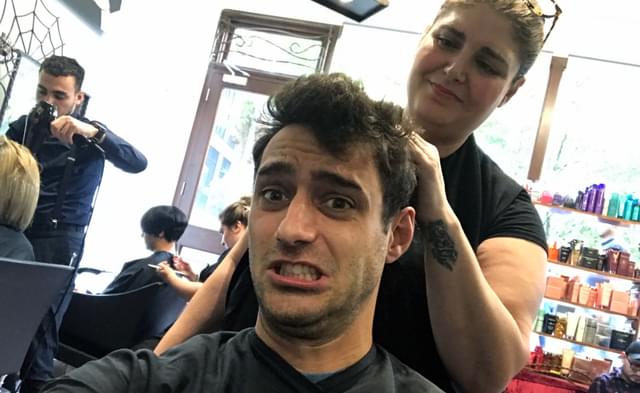What’s in a brand?
A brand is merely a symbol of trust. A memorable little mark that gives someone confidence in something they’re about to buy. So surely most brands would guard trust as if it were the goose that laid the golden egg? Yet since I was a child, most brands have done a fairly spectacular job at strangling that proverbial goose to death.
But things are starting to change. Many brands are waking up to this reality and are reconnecting with their founding purpose. Resetting their GPS pin to a place where society actually wants them to exist. And once brands have calibrated their purpose they want to start communicating it; reaffirming the problem that they exist to solve and therefore a reason for being in our lives. But rebuilding trust is no mean feat. So let’s take a look at a profession that does this particularly well: hairdressers.
Yes, I was as shocked too when I read a piece of research which ranked hairdressers as the fifth most trusted profession in the UK, next to the more obvious candidates like doctors and scientists. Meanwhile, business leaders were way down the ranks. But rather than looking at what business is doing wrong, I wanted to investigate what hairdressers are doing right.
Meet Olga
Ogla has been my hairdresser for three years. Looking at it objectively, I would say I have a disproportionate amount of trust in her. Two years ago she told me that I would go bold unless I started taking zinc tablets. Within 24 hours, I was taking zinc tablets. While she holds no qualifications in trichology, I took her advice as gospel. So let’s look at my typical interaction with Olga:
- I have a problem (long hair). It’s evident, as when it’s long, it’s in my face.

- She has a solution (a haircut)

- For £19.50, in 30 minutes, she solves that problem right in front of my eyes. She even shows me the back of my head to prove it!

Which in my eyes means that trust is a product of the relevance of the problem and the swiftness and vividness of the solution.

Back to brands
If you are communicating your brands wider societal or environmental purpose, it’s likely the problem is big, complex and distant. Unlike long hair, the problem isn’t always going to be in the face of your customers. Likewise the solution, the role your brand plays in fixing that problem, will often be long and nuanced. And, more often than not, it will appear abstracted from the product or service you sell. So it’s easy for your purpose communications to seem irrelevant and inauthentic - far from building trust, it can erode it. So in summary, purpose communications for brands is not easy.
Two things we can learn from hairdressers.
But all is not lost. Yes, communicating purpose presents big creative challenges, but these are challenges that can be overcome if we take two things from hairdressers:
- Make the problem your brand exists to solve feel as hairy and relevant to your customers as possible.
- Make the solution, or steps towards that solution, feel as swift and vivid as possible.
If you follow these these two steps, your purpose communications will be a cut above to the rest.
Notes:
I should probably note that Olga disagreed with my theory. She believes that hairdressers are trusted because they listen to their customers and breakdown social barriers through physical contact. Her point about listening is definitely something we can heed, but recommending that brands should touch their customers is a tad inappropriate.
